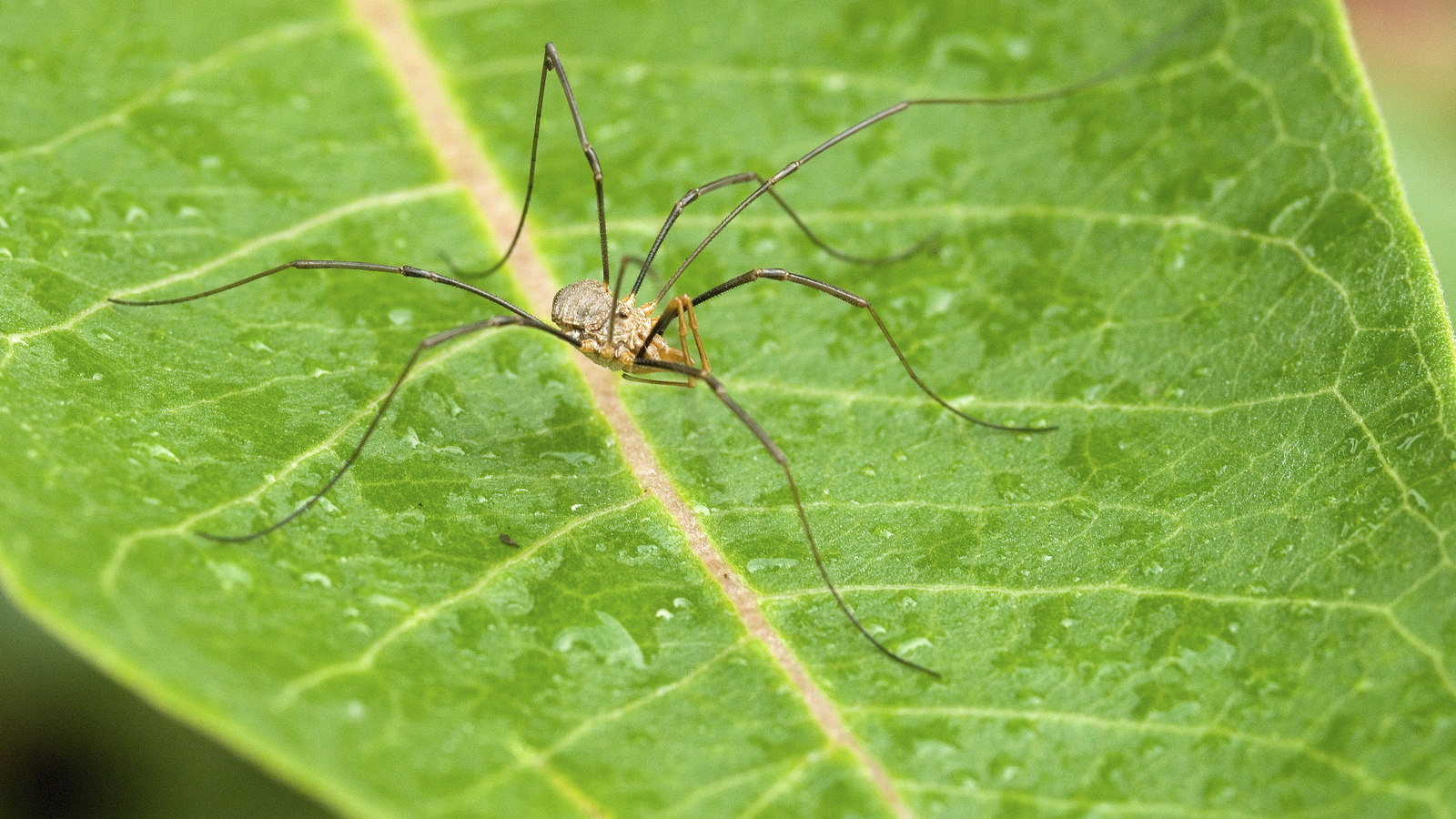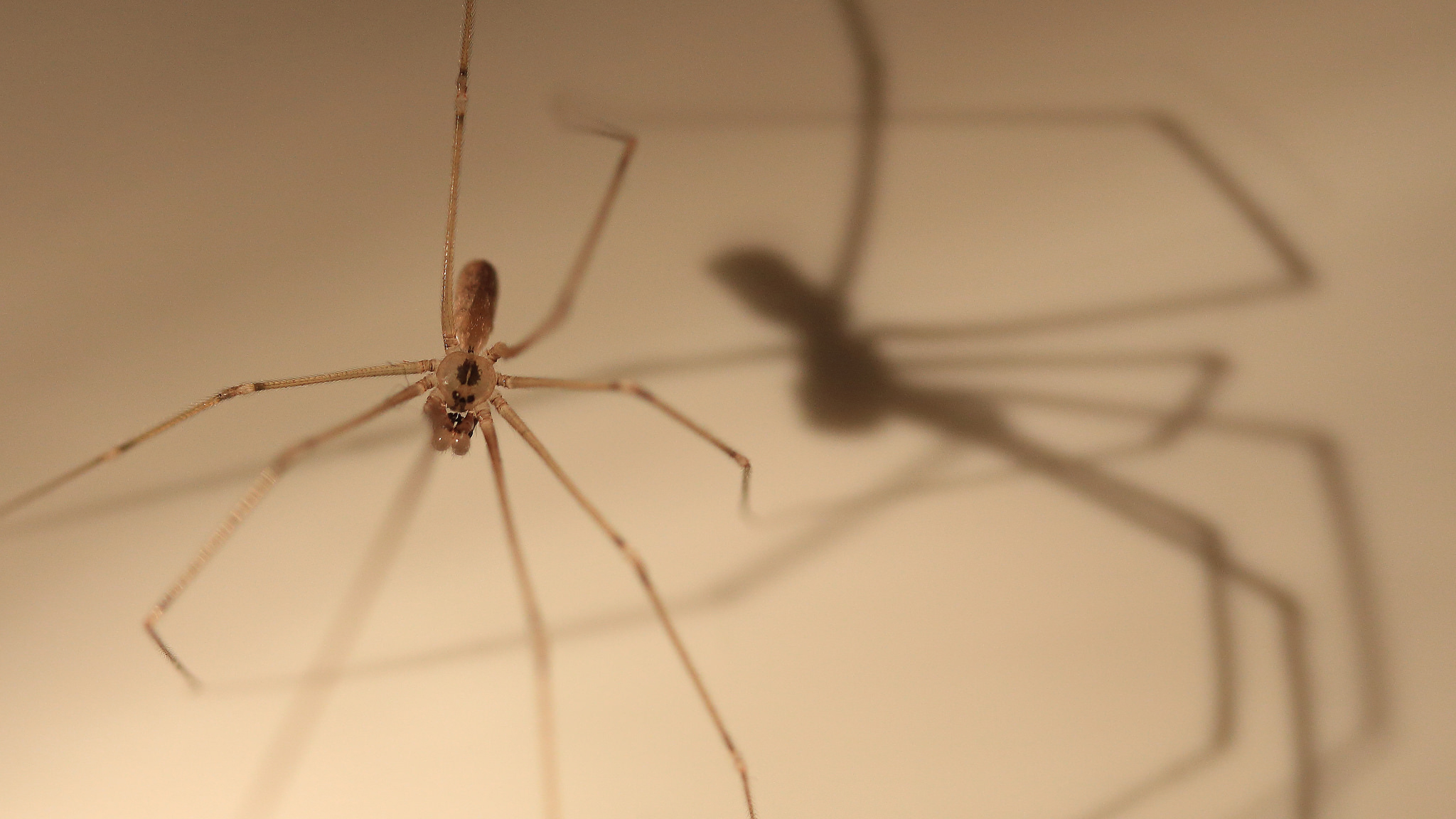I have been, for the better part of my life, terrified of spiders (and ticks and most arachnids). Not so daddy long-legs; when they happened to creep across my foot, I let it be. Then, one fateful day a friend told me that daddy longlegs are the most venomous spider on earth but they can’t bite people because their fangs are too short.
Could this be true? As an arachnophobic kid, I found it likely and spread the word. However, as an adult my skepticism kicked in and I decided to look into it. It turns out, I’m not the only one who has wondered about this. And it’s a slightly more complicated question than I thought.
There are two groups of arachnids to consider — the true daddy longlegs (of the order Opiliones) and the daddy longlegs spider (of the family Pholcidae).
Warning – if you are arachnophobic, you might want to skip the videos below.

Daddy Longlegs
A little background on daddy longlegs (also known as harvestmen) — they are not spiders, but they do belong to the class Arachnida along with spiders and many more eight-legged creatures. There are thousands of species of Opiliones around the world on every continent except Antarctica. Some incredibly well-preserved specimens in amber reveal that the Opiliones have remained largely unchanged for around 400 million years.
Unlike spiders they don’t have segmented bodies, they don’t spin webs, and no, they don’t have glands to produce venom or fangs to inject it. Some species of daddy longlegs do, however, secrete chemicals that could be poisonous to small predators – this is not a risk to humans.
In case you missed it, Opiliones recently went viral on the internet for their aggregation behavior. Up to 70,000 have been recorded gathering together in a mass that looks like a ball of hair. The reasons for this behavior are unknown – scientists hypothesize that it could have to do with maintaining humidity or avoiding predation.
Despite their namesake long legs, daddy longlegs don’t run around often. They spend most of their time sitting still in a crevice or under a log – they love shady, humid places, so you might find them in your basement or crawl space. Those legs don’t go to waste though; daddy longlegs can breathe through them. That’s right, their spiracles (breathing organs) are found on their fourth pair of legs.
Have you seen a daddy longlegs with a missing leg? They can lose them to avoid predation. In fact, the placement of the spiracles can cause the legs to continue twitching – distracting the would-be predator while the daddy longlegs escapes. However, once an adult loses its legs they don’t grow back.
Daddy longlegs truly are amazing. Far more intriguing than I anticipated when I thought that they were nature’s deadliest weapon, with the ever-present threat that they would evolve longer fangs (arachnophobia can give you weird ideas).

Quick Note on the Daddy Longlegs Spider
Though the daddy longlegs spider (Pholcidae) does have fangs and “venom” – note that not all venoms are dangerous to people – it has not been studied for its toxicity.
The team at MythBusters investigated whether the daddy longlegs spider might be the deadliest in the world and busted the myth on two counts. First, they got an expert to milk the venom and compare its effect on mice (a standard test for venoms) to the effect of the same amount of black widow venom. Black widows were far more deadly. Next, Adam Savage allowed himself to be bitten by a daddy longlegs spider – not only was it able to bite him, but he barely felt the bite and suffered no ill after effects.




At Mark’s Lake walking on forest path. I was bitten by a Black daddy long leg it had pink dots on legs, pink on back with a thin yellow line on each side of body. How come there is no info. I’m 62 years old, and I was 14 years old when I went to Canada at marks Lake. Veronica Langoehr.
This was very informative. I had the same concept of “daddy long legs” as a young man growing up in the Midwest. I’ve to learn! Thanks!
Those myth Buster guys are out of their mind there’s no way on Earth I would ever lose butter near me let alone bite me
I learnt alot from this website.
hmm daddy long legs are cool but still fright the life of me!
OK………………………….
The legend about daddy long legs spiders having the deadliest venom most likely came from their habit of hunting other spiders, including the black widows and brown recluse spiders feared for their venom, leading to the idea they have a stronger one. They are actually specialized in hunting other spiders, their long legs allow them to grab and wrap up other spiders while in a better position to avoid their bites and attempts to grab them.
This is so close up
People really need to cease harming experimental sentient animals, such as rats and mice, along with all others. There are other ways to find out information.
I had a family of daddy long legs in my university dorm room. They build their web on my window grills. I was fond of them, and I miss them greatly now. I used to put a small piece of paper on the web and shake it lightly – the spider would come running. It would then “taste” it, and once it found out what it was, go back to its original position. Sometimes I would kill mosquitoes and drop it on the webs – the spiders never touched those. Sometimes a larger bug would get stuck in the web and it would struggle, and the daddy long legs would be too scared to approach because it was too large for it to handle. And there were so many instances where I would see the spider tangling up some fresh juicy insect in its web. I got into an argument with my roommate when he wanted to remove these webs, I told him not to touch my windows.
May be I should not be so sympathetic, but what is a human anyway